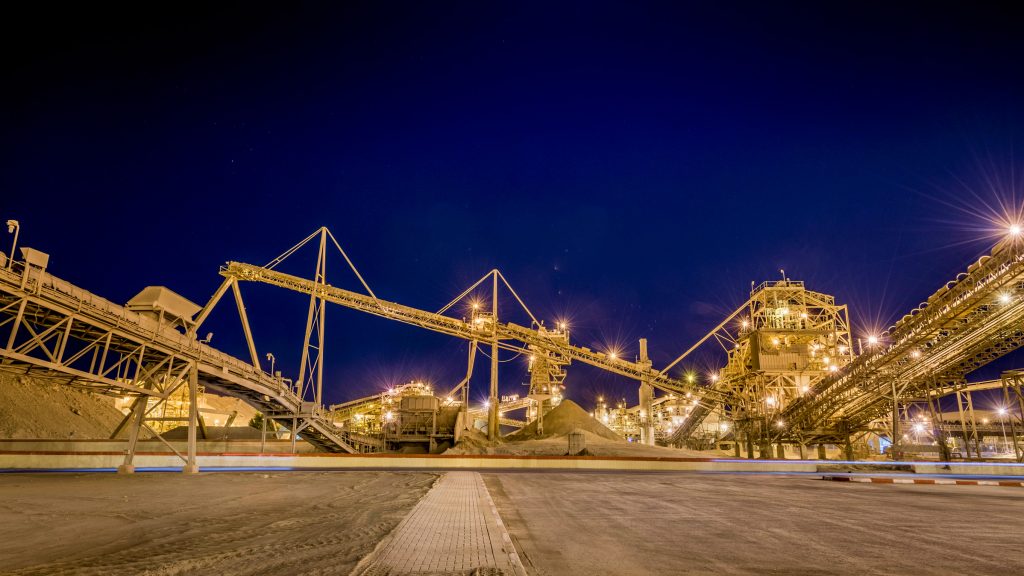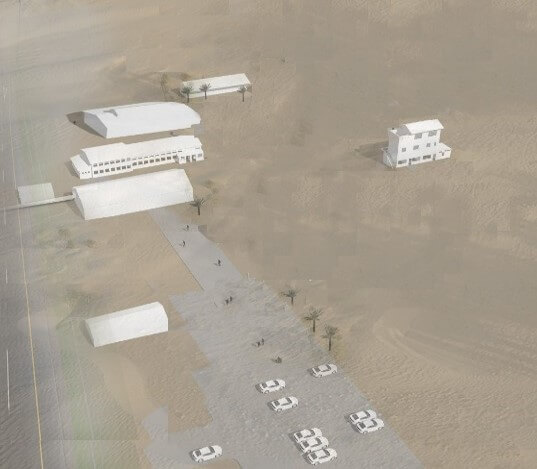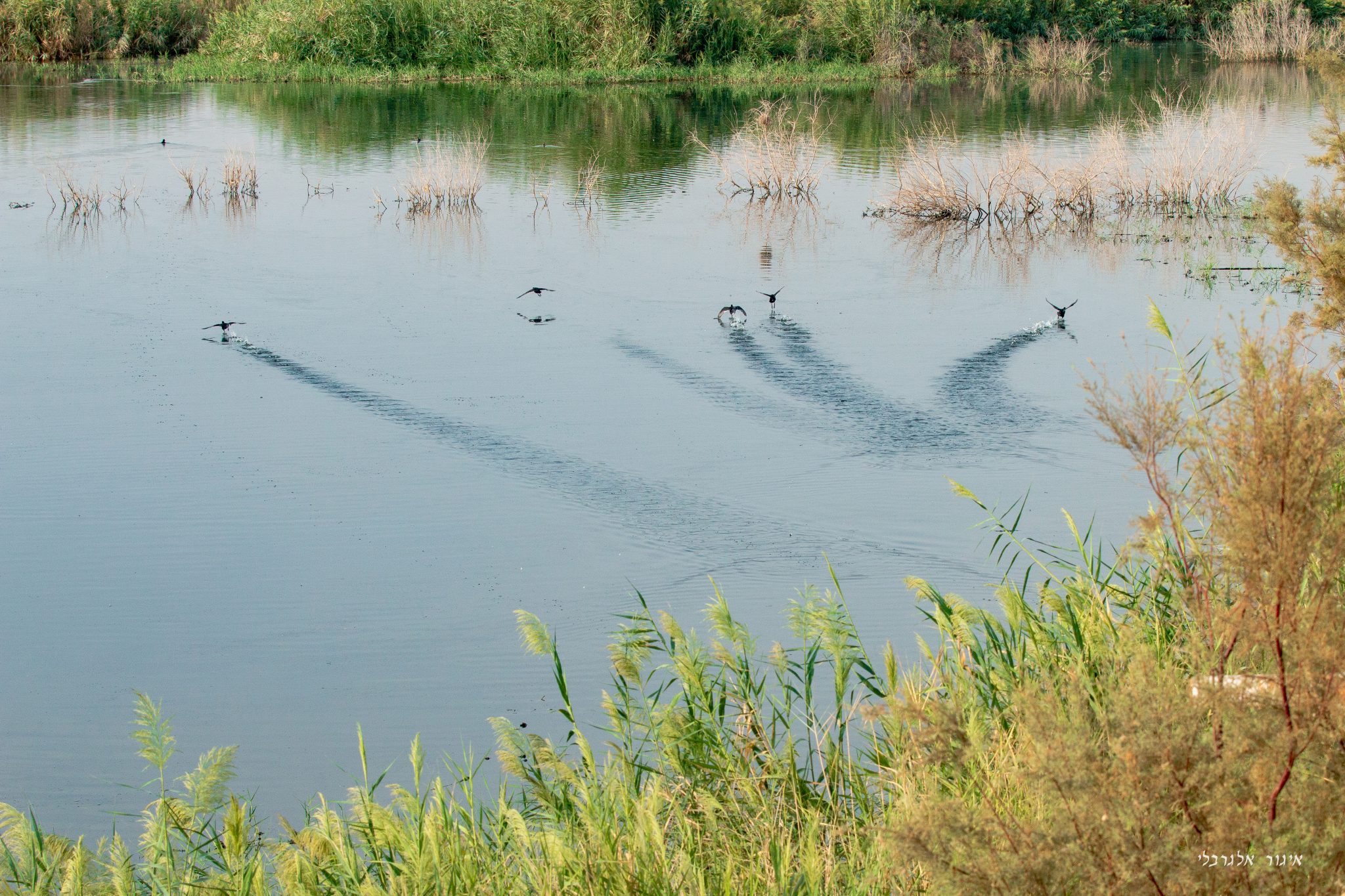Restoring Natural Resources
Eliminating Invasive Species @ ICL Dead Sea
As part of the National Dead Sea development plan, the Israel Nature and Parks Authority (INPA) is leading a project for the elimination of invasive species. The goal of the project is to restore and protect the biodiversity of the region by attempting to eliminate invasive plant species that have overtaken native flora. ICL Dead Sea Works (DSW) is taking an active role in the program and has launched, in collaboration with the Israel Nature and Parks Authority, a multi-stage project to eliminate invasive vegetation species at the site and to contribute to biodiversity preservation.
What is an invasive species?
As part of the National Dead Sea development plan, the Israel Nature and Parks Authority (INPA) is leading a project for the elimination of invasive species. The goal of the project is to restore and protect the biodiversity of the region by attempting to eliminate invasive plant species that have overtaken native flora. ICL Dead Sea Works (DSW) is taking an active role in the program and has launched, in collaboration with the Israel Nature and Parks Authority, a multi-stage project to eliminate invasive vegetation species at the site and to contribute to biodiversity preservation.
Uprooting and rehabilitation
The ICL DSW environmental protection and infrastructure departments have initiated a project to eliminate invasive vegetation that spreads uncontrollably in nature reserves, among other places, and disrupts the ecological balance. As Sdom is a relatively isolated region, the fight against invasive vegetation in this region is not lost. Therefore, ICL Dead Sea, with the assistance and guidance of the INPA, has committed to uprooting invasive plant species (mostly Washingtonia fan palms and mesquite), found on the facility’s grounds and along route 90. In addition, looking forward, ICL Dead Sea will avoid planting any known invasive plant species when landscaping the gardens of its Sdom facilities.
As part of the plan, invasive trees have been uprooted. In their place, native species have been introduced in appropriate areas. This year, during the Israeli holiday of Tu BiShvat, native trees, such as the Sdom Apple (calotropis procera), were planted on the facility’s grounds.
Reducing Light Pollution @ ICL Dead Sea

Artificial light enables us to work around the clock, but it also creates biodiversity challenges due to artificially illuminating the surroundings. The effect of artificial illumination on the natural environment is known as “light pollution”. Illuminating areas close to production sites at night is adverse to the ecological balance, could disturb animals and disrupt biological processes that occur only in the dark. Reducing light pollution could be a simple matter, such as eliminating or switching off unnecessary illumination, reducing the intensity of lighting installations, restricting its hours of use, or selecting different types of illumination such as focused torches and not those having ball symmetry.
ICL Dead Sea’s production sites are located in a sensitive region, from a panoramic and ecological perspective, and therefore it is important to reduce, as much as possible, its effect on the environment and ecosystems. In recent years, ICL Dead Sea has been addressing the challenge of reducing light pollution in several ways:
- Changing lighting fixtures from mercury and HPS lights to LED lights.
- Ensuring that the angle of light of an LED fixture does not exceed 120 degrees, as opposed to other light fixtures that may reach 360 degrees.
- Altering lighting systems in open areas so that they are activated by a motion sensor. Drilling yards, previously illuminated throughout the night, have now been darkened. Any lighting required for emergency maintenance work at night (a rare occurrence) can be switched on either remotely or on site. This initiative, at 40 drilling yards in the Sdom area, was implemented in collaboration with the INPA.
- Darkening drilling yards in open areas reduces their light pollution as well as energy costs.
Land Rehabilitation & Restoration
The southern portion of the ICL Dead Sea (DSW) site encompasses 36,000 hectares in the Judea Desert near the Dead Sea. This area contains distinctive panoramic, geological and historical attributes, some of which have been impacted by ICL Dead Sea’s quarrying, mining and drilling activities, as well as other factors unrelated to the Company. ICL Dead Sea has initiated and is engaged in various rehabilitation and restoration projects within its concession area. The Company continues its efforts to minimize its environmental footprint.
ICL is also working on restoration projects with partners such as the Tamar Regional Council, The Israeli Ministry of Environmental Protection and the Nature and Parks Authority. Projects include a restoration plan at Heimar stream estuary, providing organized safe access to public open areas, conservation of the “Sdom Saltmarsh Lake” and making it accessible to the general public, as well as other initiatives.
Restoration of Areas Disturbed by ICL Dead Sea’s Activity in the Concession Area
Over the past several decades, ICL Dead Sea has carried out various earthworks in open areas that are a part of the Company’s concession area in order to support its production facilities. These works resulted in various environmental disruptions and hazards which ICL Dead Sea, over recent years, has resolved to address by restoring these areas, in collaboration with the Ministry of Environmental Protection and the Israel Nature and Parks Authority. At later stages, ICL Dead Sea plans to continue upgrading some of the sites to make them accessible to the public.
| Size (hectare) | Protected | Status | |
|---|---|---|---|
| 2019: Navit Pond & Sdom mountain | 28.5 | Inside a nature reserve | Fully restored - third party approved |
| 2019: Ashalim Stream- east road 90 | 6.5 | Adjacent to a nature reserve | Fully restored - third party approved |
By Geoteva




The Arava Stream and the adjacent Brine flow channel
The Arava stream canyon constitutes a sort of natural border between Israel and the Kingdom of Jordan. It begins south of the ICL Dead Sea’s most southern evaporation pond, through a course between the Jordanian evaporation ponds to the east and ICL Dead Sea’s ponds to the west, and from there continues north towards its end in the northern basin of the Dead Sea.
The Arava stream canyon meanders in a buffer area between the Israeli and Jordanian facilities, and their brine water is discharged there, following mineral extraction. The discharge of brines to the stream by ICL DSW is transparently and continuously reported to the authorities, and conducted according to publicly available permits.
In addition, and separately from the Arava stream, there is another adjacent brine flow channel, where seeping brines from ICL DSW’s Pond 5 are collected. The brine flow channel is well known and the authorities are familiar with it. Many observation visits of this area have been conducted, including by helicopter, as entry to this hazardous area (due to old land mines) is prohibited.
In the late 1970s, the northern basin, which is natural and deep, and the southern basin, which is shallow and contains ICL DSW’s evaporation pond array, became severed. The buffer area between the northern and southern basins has transformed into a dried-up seabed, a hazardous area due to the prevalence of sinkholes and landmines strewn throughout it. As a result of the decreasing water level in the northern basin and growing height differences, the Arava stream and the adjacent Brine flow channel have both eroded, uncovering extraordinary views and geological phenomena.
Infrastructure work is being carried out on the Jordanian side of the Arava stream, for the construction of a temporary access road (which will be overrun during the next flood season), for the purpose of examining possible ways to address the continued erosion of the Arava stream, which may undermine the stability of the salt ponds.
Work carried out by ICL DSW is part of the broader salt harvest project, conducted as per the company’s agreement with the Israeli government, which is designed to fix the water level of the ponds, thereby allowing the development and even addition of hotels situated adjacent to the ponds.
The Dead Sea visitor center project
ICL DSW, in coordination with The Council for Conservation of Heritage Sites in Israel, will convert an old worker camp of the Eretz-Israeli Potash Company into a new visitor center. The visitor center will include exhibits with three main themes:
- The history of Dead Sea Works, from before the establishment of the State of Israel. Its predecessor company, Eretz-Israeli Potash Company, employed hundreds of Jewish and Arab employees.
- Exhibiting the special characteristics of the Dead Sea region, its unique nature, history and environment, and how the Dead Sea rift was created tens of thousands of years ago.
- The current industry in the region – its interrelation with the environment, contribution to the region and the country’s economy and its vital role in the global food supply chain.
Over ILS 40 million has been invested in the project, which is expected to be open to the public by the end of 2020.

Forming a Detailed Plan for the Nahal Heimar Estuary, South of the Dead Sea
Heimar stream, one of the longest creeks in the Judean desert, contains unique geography and biodiversity, including rare plants, animals and geological formations. In the midst of this environment, extensive mining and water infrastructure works (damming and flow channels) have been conducted over many years, including drilling and pumping stations for ICL Dead Sea Works. The Company, in cooperation with the INPA and the Tamar Regional Council, formed a plan for the integrated restoration of the area. The plan includes panoramic and ecological restoration of damaged areas, as well as restoration of areas for tourism development in the areas adjacent to the road. ICL has selected a plan involving minimum development – that will provide hikers with an opportunity to explore the area without damaging it. This plan will allow for mining activity to continue in parallel with restoration of the entire area. The detailed plan was approved in 2017.


